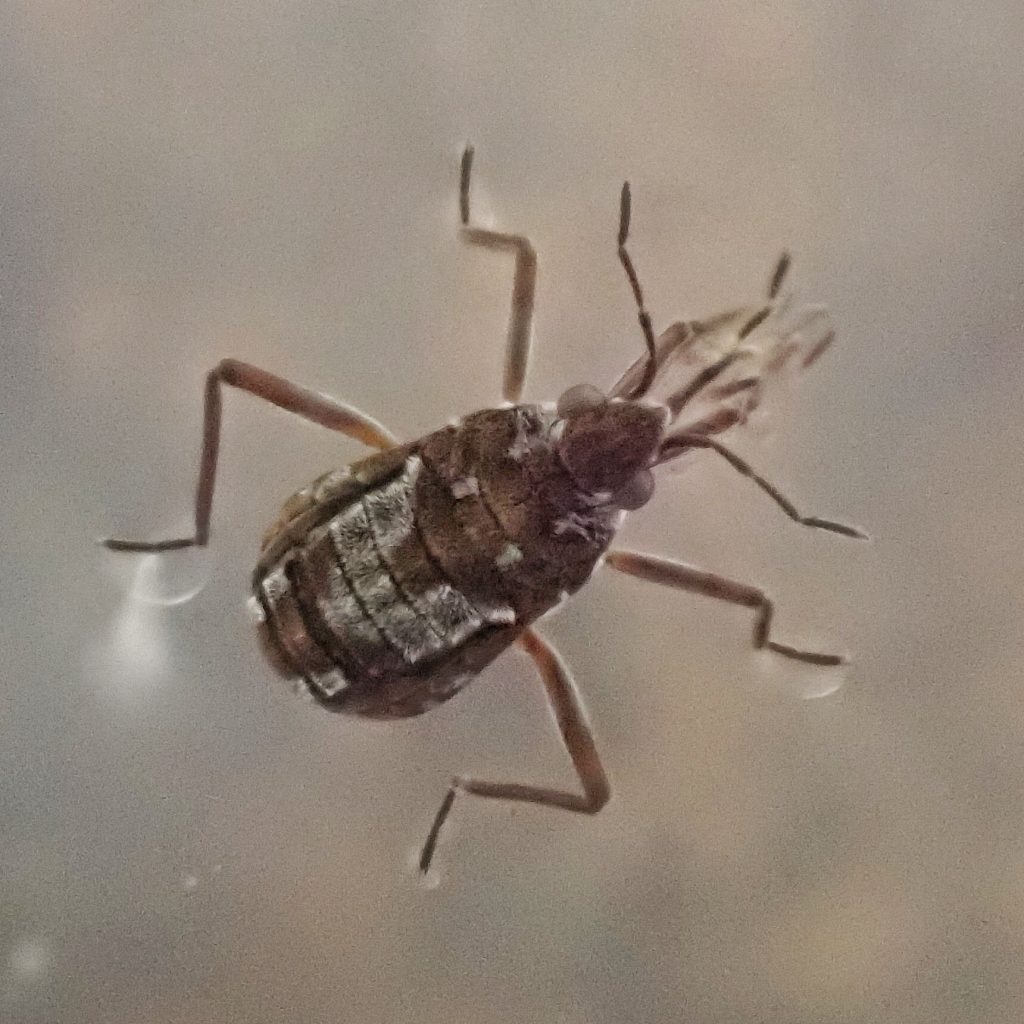
I was fishing on Canyon Creek in Clark County, Washington when I found these, the same day I encountered the puddle party of swallowtails. At one point, while replacing yet another of the many flies I lost that day, I looked into some little water pockets atop the rock I was sitting on, and saw tiny bugs skating around on the water. When I got my face down close I could see a bit of a pattern on them, so I started snapping photos of anything I could get close to, and snagged one for a specimen.
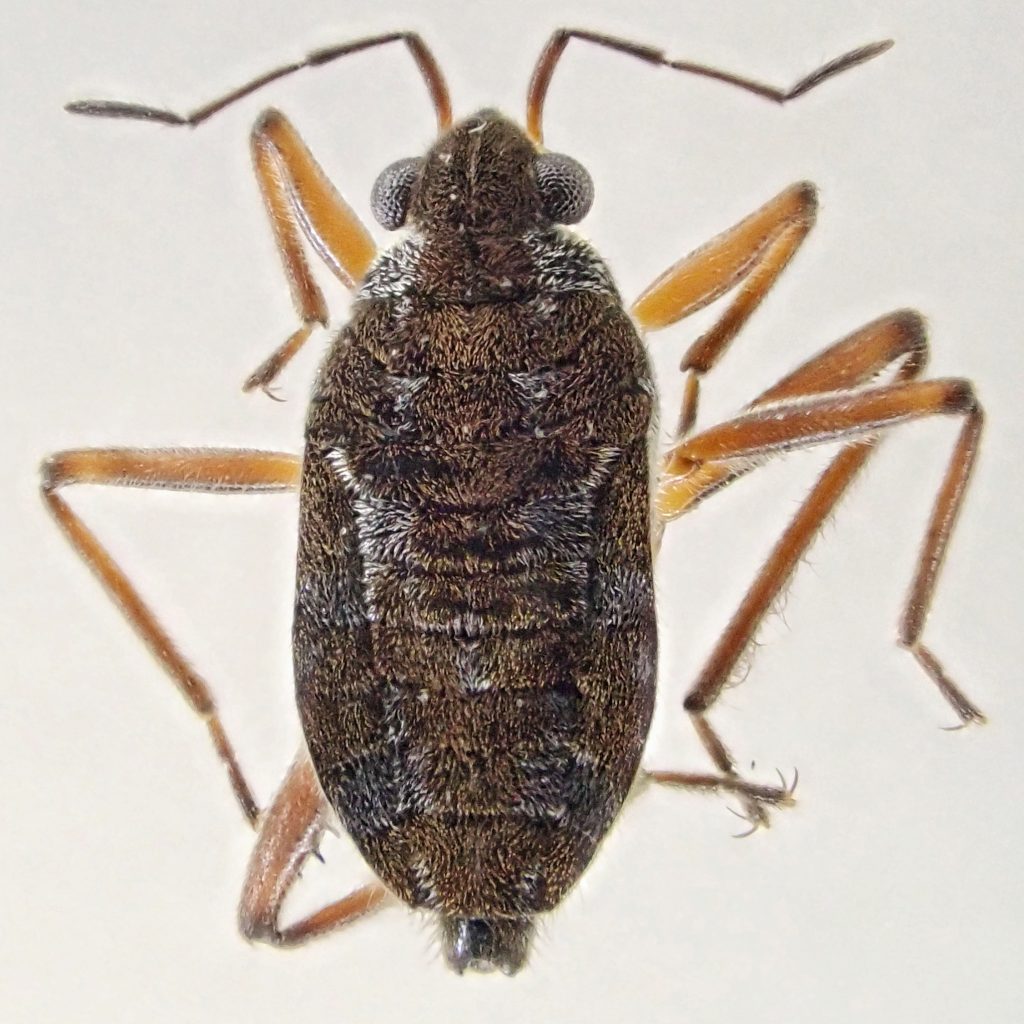
Because of the research on Aquarius remigis I knew that their short hind femora ruled out Gerridae, and I thought that the body shape was too broad for Mesoveliidae or Macroveliidae. When I saw that the claw came before the tip of the tarsi I knew I could rule out Hebridae. Once I was in Veliidae (smaller water striders) I could rule out every genus except Rhagovelia and Microvelia based on their range, and then I could eliminate Rhagovelia because of the lack of plumose hairs on the tarsi (as well as the general body shape of that genus, which narrows quite a bit in the abdomen). It may be pretty boring to read, but it was exciting to do, and I was starting to think I might get it to species when I realized that the combination of relativity large size (3.5mm) and three segmented pronotum put it in the subgenus Kirkaldy.
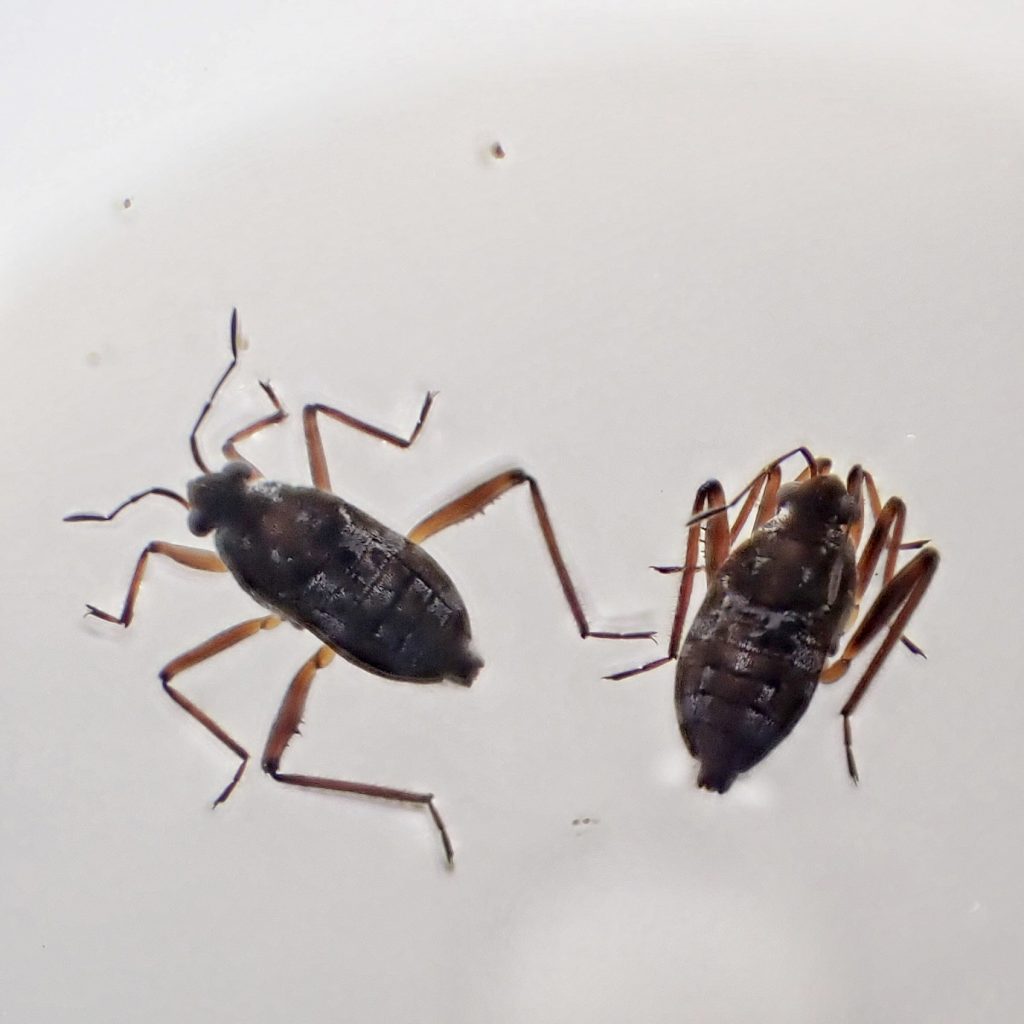
Unfortunately, because the key got down to genitalic hairs at this point, and the distribution of the various species is so unclear that I couldn’t rule out many of them, I couldn’t take it past the subgenus Kirkaldya. But the expert on BugGuide said it is most likely Microvelia califoriensis or M. beameri. This was a red letter bug for me! Though they are not uncommon they are undersurveyed, so my submission to BugGuide was not only the first one for this subgenus in Washington state, it was the first one in the state for the whole family Veliidae.
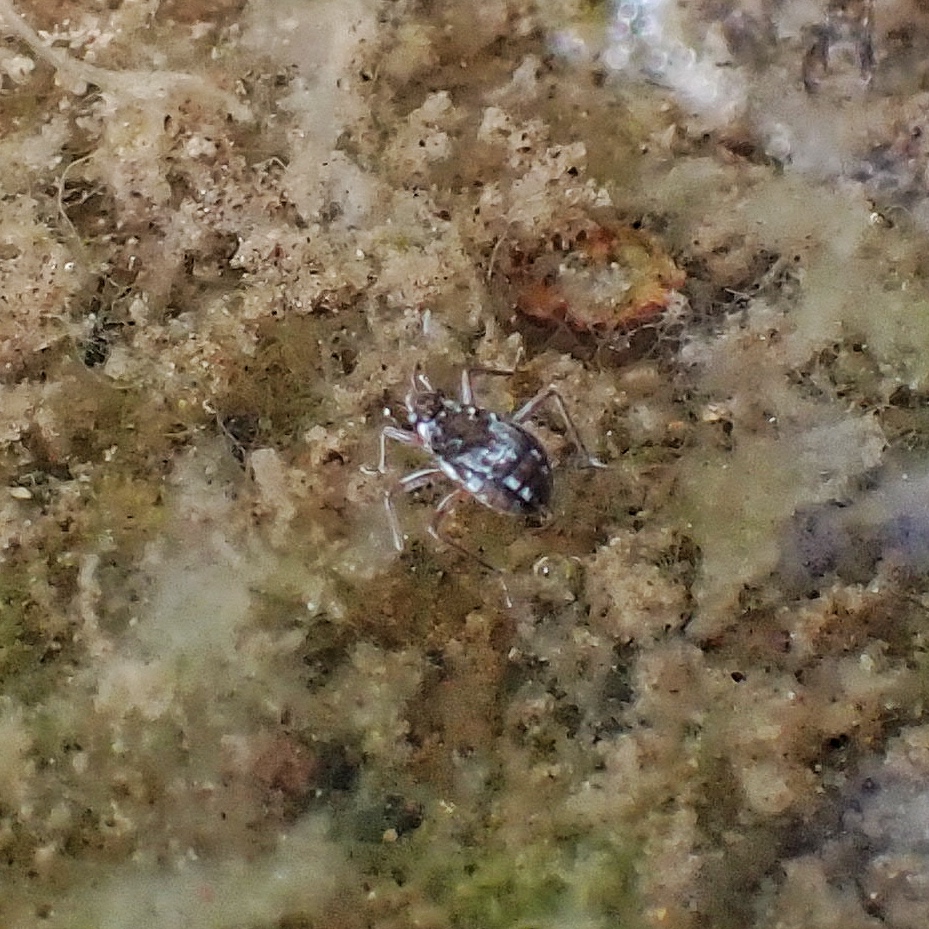
Veliidae in general are sometimes called riffle bugs, but in the case of Microvelia that is something of a misnomer, since they tend to be found on still waters and in the quietest water of, and along, streams. But those in the subgenus Kirkaldya do have a propensity, when threatened, to flee into the faster water of the streams they inhabit. And, due to the relative length and placement of their legs and their use of all six legs for locomotion, they move around quite well on land, and are sometimes found several feet away from water. This is quite different from members of Gerridae, such as Aquarius remigis, which are seldom found more than a few inches from water.
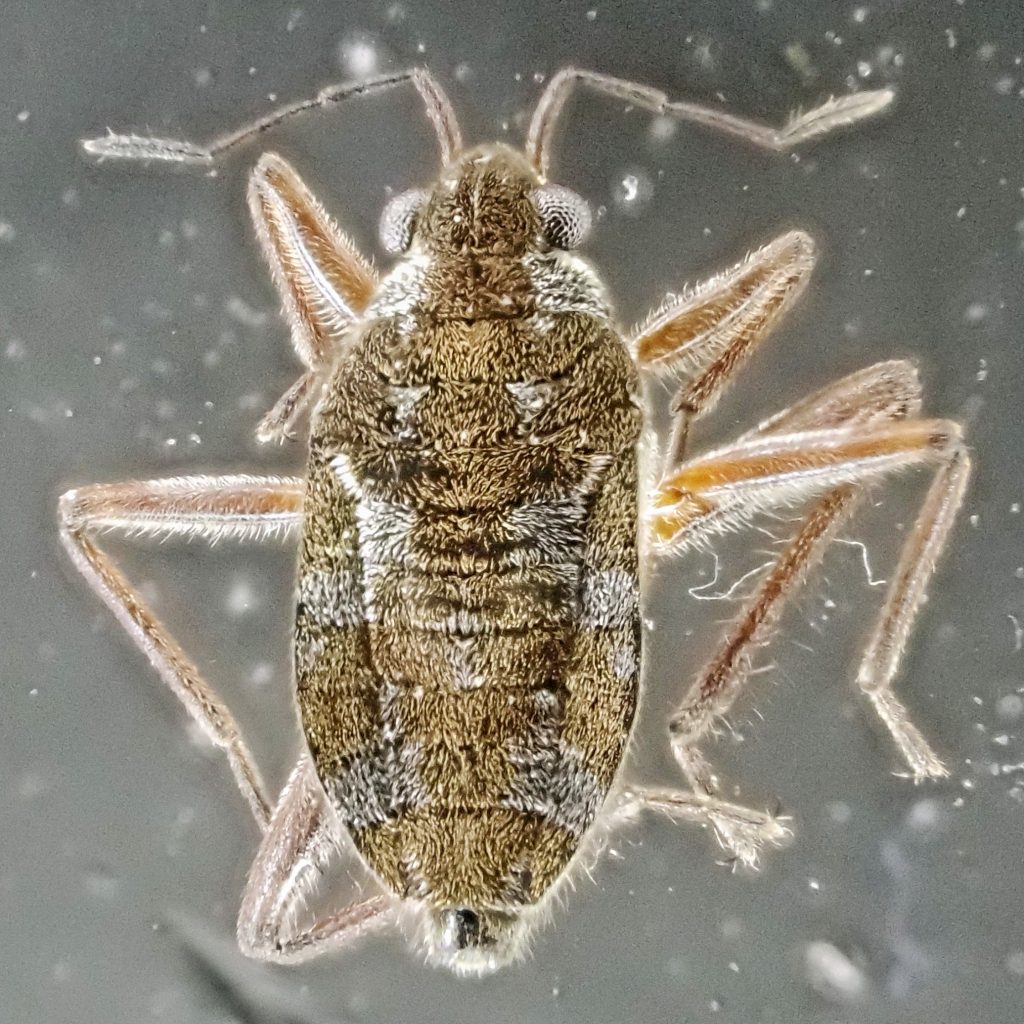
Like many semi-aquatic Hemiptera, Microvelia sp. have wing polymorphism, and full winged (macropterous) and wingless (apterous) forms can both be found, although apterous forms are the most common. This is obviously a useful tool for dispersal from seasonal waters, but the prevalence of the apterous form is probably because most populations live on permanent water sources, and there is a negative trade off between ovarian production and wing formation. But apparently there is a genetic ‘switch’ which can be activated during the later instars, which will stimulate wing formation if conditions require it. It is also interesting to note that in some species of Microvelia apterous forms only require 4 instars to reach maturity, which could certainly aid in the possibility of successfully maturing a second brood per year.
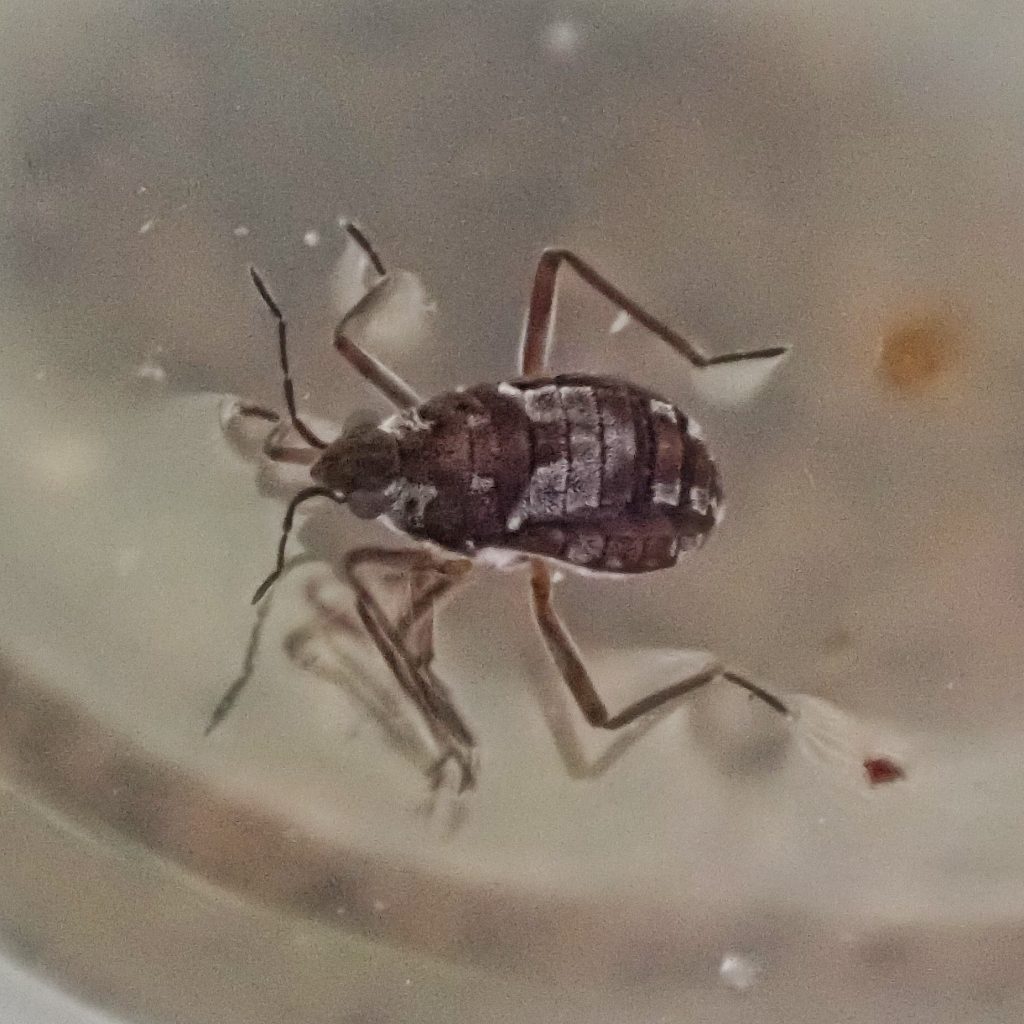
Description-Small (3.5-4.5mm) teardrop shaped water strider that is brown with silvery white or grey markings, mostly on the abdomen; pronotum is in three segments, with a pair of silvery white/grey dots on each segment; females are usually about 1/3 larger than males.
Similar species– See above; family identification is easier with this key; genus and species identification requires a key (like this one) and microscopic examination of genitalia
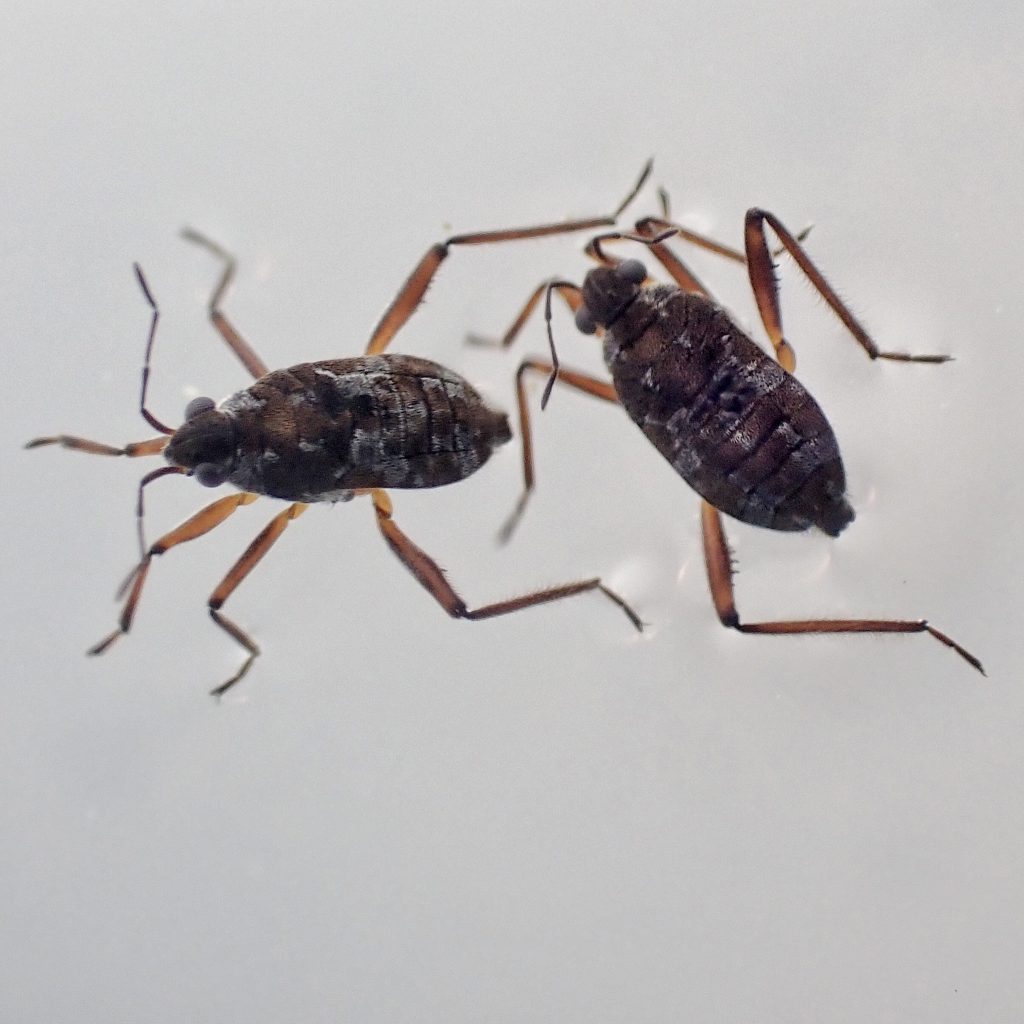
Habitat-On and near the margins of moving water, often in small pools landlocked by dropping water levels.
Range-Western North America, possibly larger; M. califoriensis and M. beameri may be found throughout the region, but that hasn’t been documented.
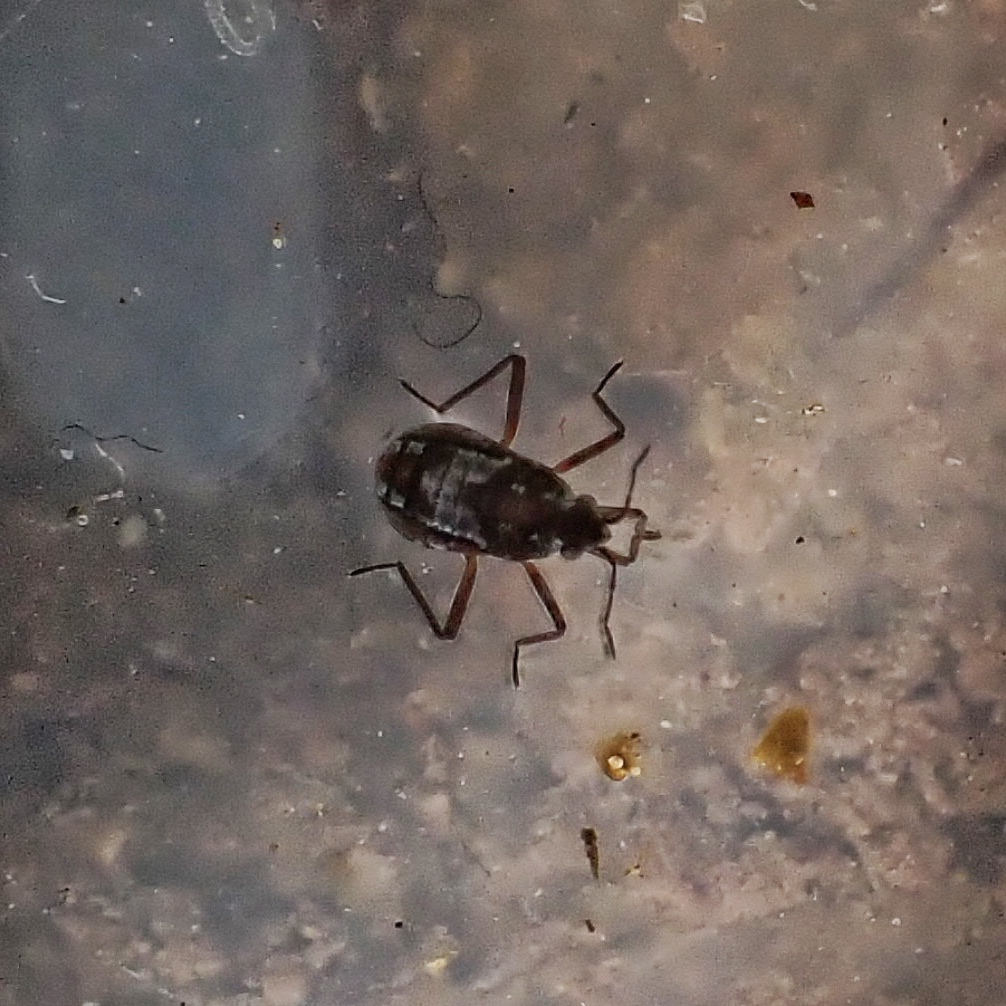
Eats-Searching predators rather than ambush predators; Ostracods (seed shrimp) and other tiny crustaceans; dead and dying insects and Collembola (springtails) caught in the surface film; mosquito and midge eggs and larvae; cannibals of freshly moulted nymphs, at least in laboratory situations.
Eaten by-Backswimmers, dragonflies and damselflies, spiders, especially wolf spiders, other semi-aquatic Hemiptera (especially members of Gerridae), frogs, fish, birds.
Adults active-Probably March through September.
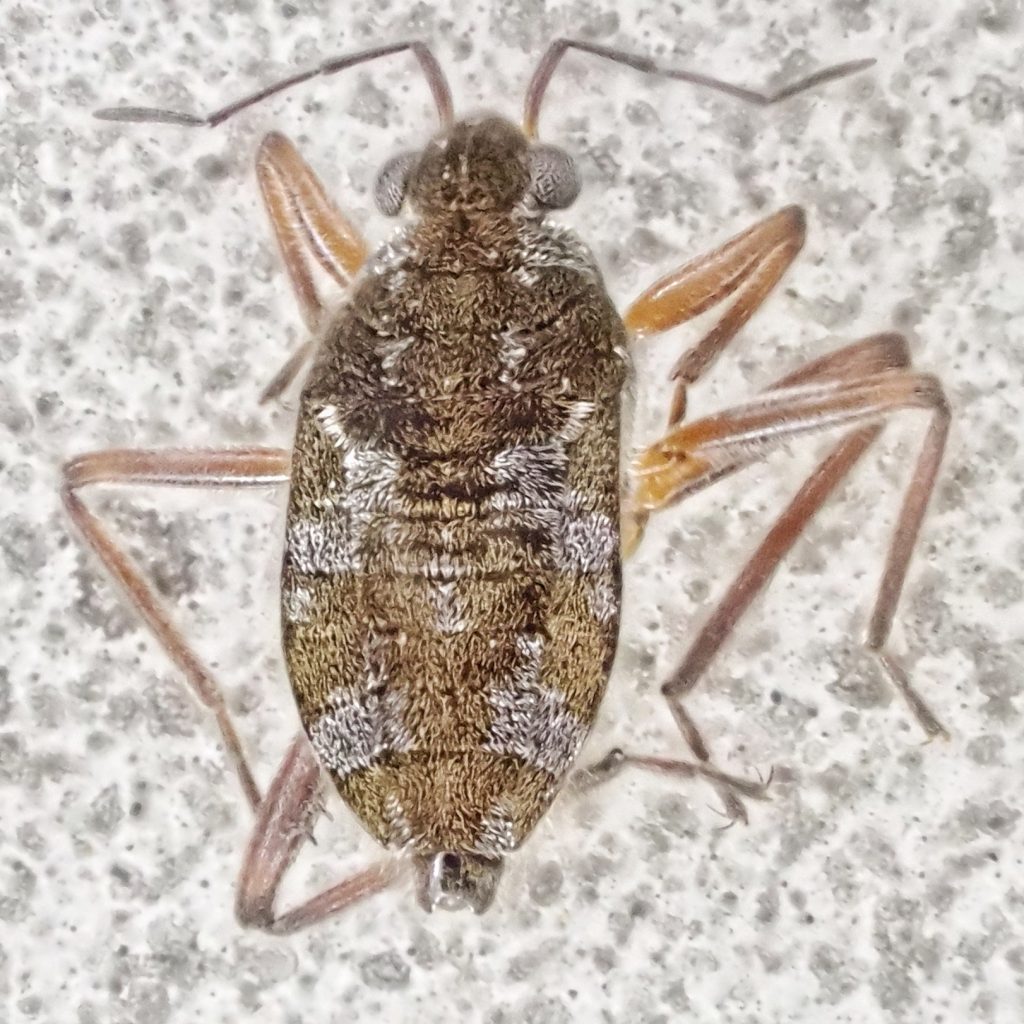
Life cycle– I can’t find much that is specific for this subgenus, but they probably lay eggs lengthwise, at or above the waterline on floating debris or emergent vegetation, in groups of about a dozen a day for about two weeks; eggs hatch in about a week, and take 2-5 weeks to reach maturity, depending on temperature and number of instars (I can find no information on whether our apterous species of Microvelia (Kirkaldya) are some of the Microvelia (Kirkaldya) that only have 4 instars; most Microvelia overwinter as adults in diapause, but some overwinter as eggs, and I can find nothing specific regarding our Microvelia (Kirkaldya) regarding their overwintering habits.
Etymology of names–Microvelia would seem to come from a combination of the Greek word for ‘small’ and the Latin word for ‘veiled’, but I can’t confirm that, nor ascertain what it references. The subgenus epithet Kirkaldya honors GW Kirkaldy (1873-1910), a British entomologist who worked extensively with Hemiptera (true bugs).
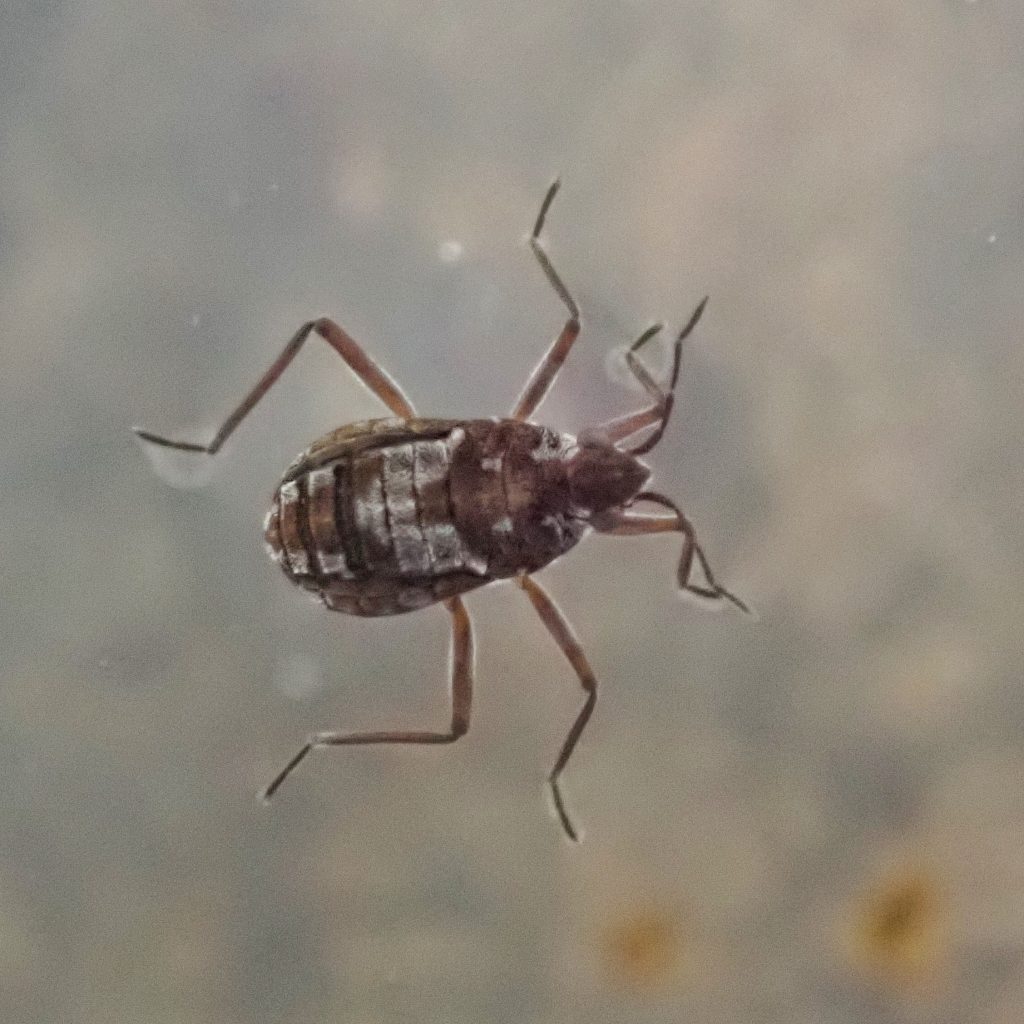
https://www.biodiversitylibrary.org/page/16381147#page/72/mode/1up
https://bugguide.net/node/view/2141011
https://bugguide.net/node/view/752316
https://bugguide.net/node/view/2103097
http://publicfiles.dep.state.fl.us/dear/labs/biology/biokeys/heteroptera.pdf
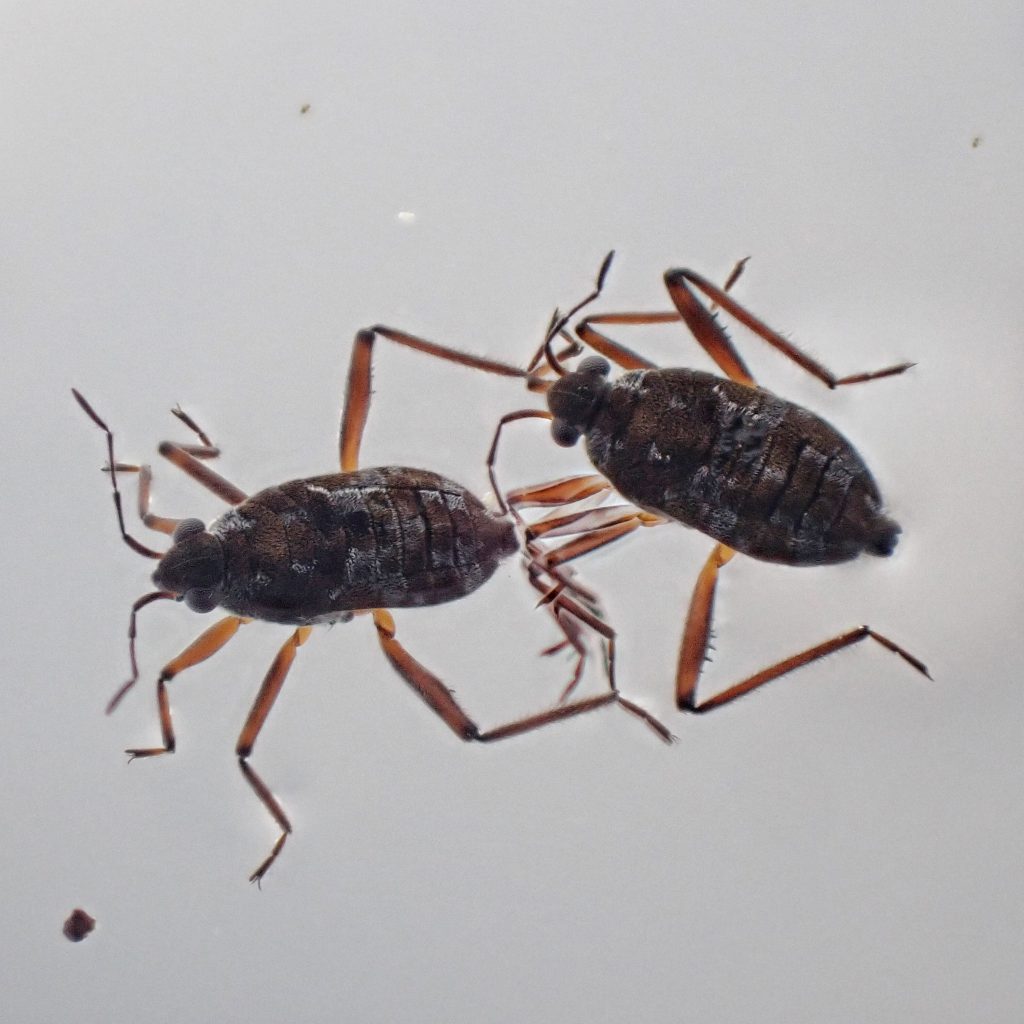
Who new that water striders could be so cool ! And so obscure. Thanks for enlightening
Thank you for your appreciation!